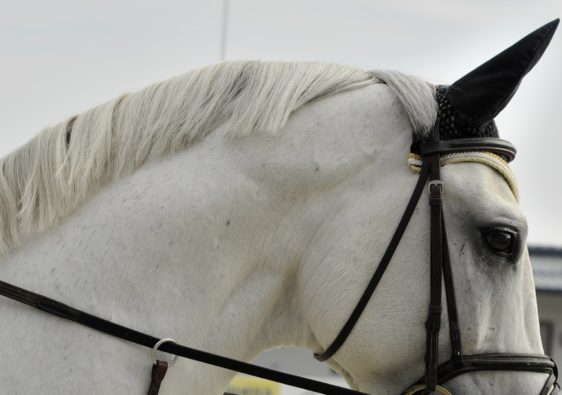Being able to take your horse out on the road might be the only way to get to that trail up the road, or it can be a great way to stretch their legs with a nice hack. No matter the reason, being able to do so safely is, obviously, the ultimate goal. It is a great way to increase your horse’s exposure and add variety to his/her workouts.
But riding on the road adds a lot of variables and heightened stimulus so it means you need to take every precaution for your safety and your horse’s.
Here’s a quick list:
- Be visible. Wear colours that stand out against the scenery, and especially be sure to have reflective gear if you are riding within hours of dawn/dusk, and on overcast days where visibility is poor for drivers. On winding roads, if you can’t see oncoming traffic around bends, they won’t see you. Stop, wait, and listen for the sound of motor vehicles and stay as far onto the shoulder as you can before proceeding.
- Wear safety gear. This includes your helmet. It should also include any additional gear that may protect you and your horse including splint boots or polos to provide a little extra support from the concussion of riding on the extra-hard surface, as well as to protect their tendons from any gravel that may fling up. It might also include a cross-country vest if you have one to protect yourself.
- Know the rules. We each need to know our part when sharing the roads. You should be riding in the same direction as traffic flow. (In N.A. on the right, in the UK on the left.) You are expected to obey traffic signs, and be familiar with hand signs (which are the same as for cyclists):

- Be responsible. It’s up to you to recognize your horse’s experience/education and to decide if s/he is ready for a road hack. For nervous/green horses, it is best to ride with an experienced, calm horse to be a positive influence. When riding alone, it’s not a bad idea to carry a mobile phone with you in the event of an emergency, but turn the ringer (or phone) completely off. You should be paying attention to your horse and traffic, not the incoming text messages.
- Don’t be shy about signalling drivers. They might not always acquiesce but it’s worth a shot if you’re worried. Some drivers literally have absolutely no knowledge of horses, and even if they do, it’s totally okay to signal them to slow down, move over, stop, whatever you need. It is better to attempt to communicate to prevent a potentially dangerous situation than to just hope for the best. Granted, if your horse is acting up you will probably need both hands on the reins, but if you are riding with a friend, communicate to them to signal the driver if they aren’t already.
- Show appreciation. Acknowledge drivers who are courteous, slow down, or leave plenty of space when passing as a token of thanks and to reinforce that it is good manners to do so. In Canada, it is the law to do so, but gratitude is a better way to reinforce courtesy!
In Canada, riders and handlers of animals have priority for safety on all roads, as stated in the Highway Traffic Act:
 “Approaching ridden or driven horses, etc.
“Approaching ridden or driven horses, etc.
167. Every person having the control or charge of a motor vehicle or motor assisted bicycle on a highway, when approaching a horse or other animal that is drawing a vehicle or being driven, led or ridden, shall operate, manage and control the motor vehicle or motor assisted bicycle so as to exercise every reasonable precaution to prevent the frightening of the horse or other animal and to ensure the safety and protection of any person driving, leading or riding upon the horse or other animal or being in any vehicle drawn by the horse or other animal. R.S.O. 1990, c. H.8, s. 167.”
… But it is not a prerequisite that all drivers read the manual, so it doesn’t mean drivers are aware of this. Additionally, roads are getting busier and what were once country roads are becoming commuter routes. These drivers may not be familiar with the fact that horses can be unpredictable, flighty animals.
Not all roads are marked with signs indicating horses may be present. If such is the case, it might be a good idea to get in touch with your municipality to ensure that signs are in place to warn drivers.
The Horse & Hound, a British publication, has a great article on introducing and addressing road hazards while on horseback right here.
The Queensland Horse Council of New Zealand has published some great promotional ads for road safety, and have an informative page you can share on social media to promote awareness:



